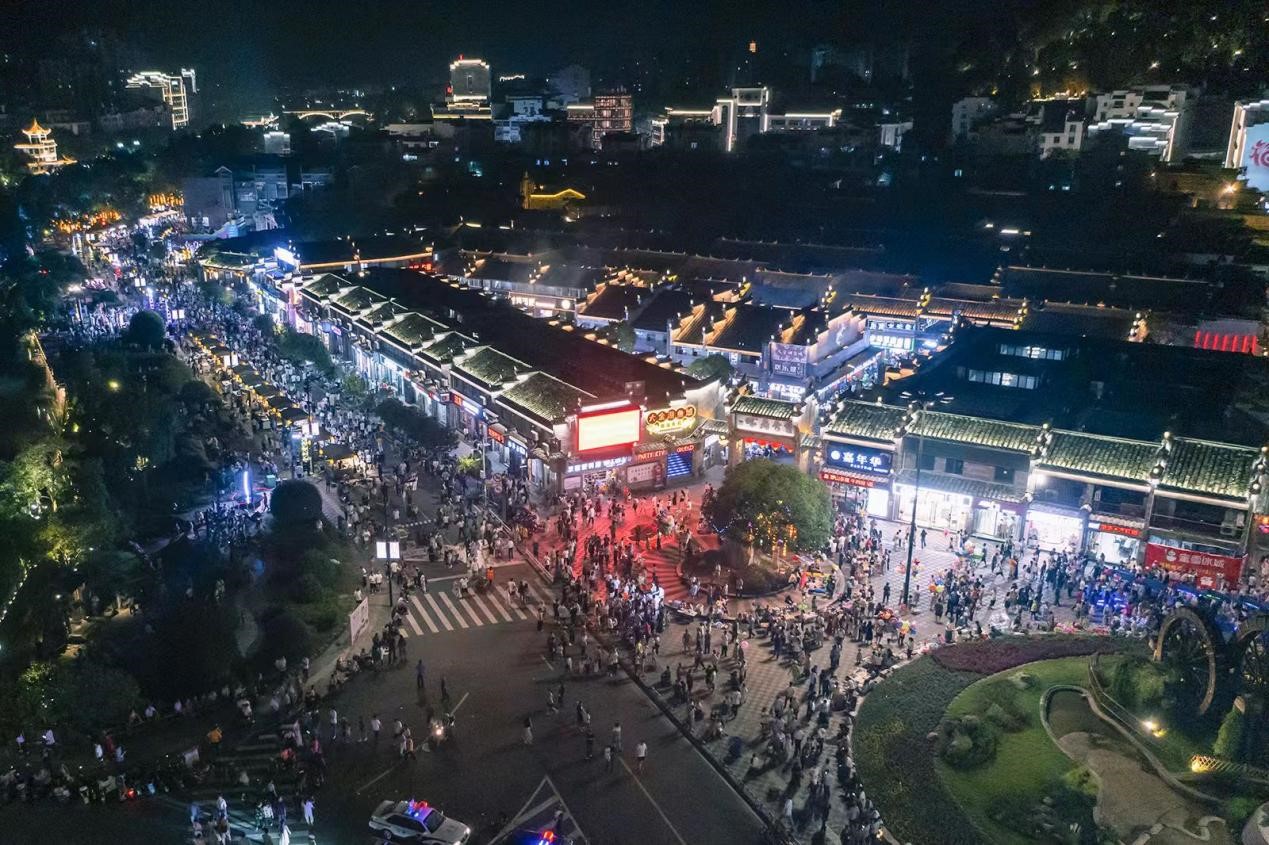Night Markets, Lei Tea, Performances, Traditional Costumes, Taverns... Taining County in Sanming City, Fujian Province, honors history and cherishes culture by persistently advancing the protection and revitalization of its historic city. It explores links between cultural heritage and modern life, improving the living environment for residents, enhancing cultural pride, and attracting visitors from all over with fresh cultural tourism experiences. This living ancient city has become a beloved travel destination.
Taining, known as a “Han and Tang Ancient Town, Song Dynasty Historic City,” has been a cultural hub, famed for producing distinguished figures. It once created the renowned tale of “Two top scholars on opposite sides of the river, four imperial officials in one family, and nine successful scholars in one lane.” According to the national cultural heritage survey, Taining contains 252 ancient buildings, including 130 residences, which make up 51.59% of the total. These well-preserved structures, rich in distinct features, are rare treasures in Fujian and across China. Among them, the Shangshu Residence Complex is celebrated as “the finest traditional residence in the Jiangnan region.”
A visit to Taining offers not only the grandeur of “official-style residences” but also captivating natural landscapes. Taining represents the youthful stage of Danxia landforms, earning it the title of “the birthplace of China’s Danxia story.” It boasts numerous honors, including UNESCO World Natural Heritage, World Geopark, and National 5A Tourist Destination status, with major attractions like Dajin Lake, Shangqing Stream, and Jiulong Pool, drawing nearly 10 million visitors annually.
In recent years, as a historic city, Taining has adopted a pragmatic, phased approach to gradually restore its ancient streets and buildings. To date, Taining has largely completed improvements to historical districts like Shangshu Street and Red Army Street, restoring over 130 cultural and historic buildings, revitalizing 15 kilometers of ancient alleys, and refreshing over 500,000 square meters of building facades, bringing the ancient city’s charm back to life.
“Why didn’t residents enjoy living in the old city before? It was inconvenient,” explained Li Huiping, a Taining County Government member. “Recent restorations have added essential modern infrastructure, like rainwater and sewage networks, and residents are increasingly willing to renovate their homes.”
“A thousand-year-old city, Taining life,” says 89-year-old Liang Guangkui with pride. “I’m a true Taining native. Living here was once inconvenient, but after renovations, roads are accessible, and the environment is clean. Residents are satisfied, visitors are increasing, and I’m proud to see people admire Taining’s ancient architecture.”
The ancient city is thriving with new vitality. Taining is actively promoting cultural heritage preservation alongside the integration of culture, commerce, and tourism. By enhancing interpretation and adaptive reuse of historical resources, new spaces and consumption scenes are emerging.
Since 2021, Taining has made strides in revitalizing its ancient city, adopting a model of “cultural adoption.” This has fostered a variety of themed establishments such as light restaurants, teahouses, bars, cafés, inns, and private cinemas. Now, distinctive cultural streets are taking shape, like Shangshu Street for cultural tourism, Red Army Street for red-culture exhibitions, Jiujuxiang Tea Street, and Jinshi Alley for arts and crafts. Taining has also enriched its preservation efforts with resources in intangible cultural heritage, folklore, and red culture, establishing rural heritage exhibition gardens, the Hongping Art Space, the Shanyang Architecture Pavilion, and the Eastern Army Memorial Gallery. The city has boosted the preservation of local heritage arts like Meilin Opera, Nuo Dance, ancient music, and lantern displays. In 2023, Taining’s ancient city and Shangshu Alley were named national-level nighttime cultural tourism and leisure districts.
Wu Huahui, a young entrepreneur who returned to Taining, opened a private cinema café in the old city. Previously the Zou Family Academy, the building is an elegant structure from the late Ming and early Qing dynasties. He noted, “Business has been great, and I recently invested in a spa. Nearby cities have even inquired about replicating our model here.”
Zhu Jiangping, who came from Hangzhou to open a guesthouse in Taining, mentioned that the response exceeded his expectations. “On my first visit, I was drawn by the stunning landscapes, rich history, and warm local culture, so I decided to give it a try. Now I see guesthouses as a sunrise industry in Taining, so I’m expanding investments and focusing solely on running my business here.”
Thanks to these efforts, this “living ancient city of millennia” is drawing in waves of visitors, fostering a thriving cultural tourism market. During this year’s National Day holiday, Taining County welcomed 1.244 million visitors, a 14.09% year-on-year increase, with tourism revenue reaching 1.125 billion yuan, marking a 15.1% growth and a new historical high.
Media Contact
Company Name: Taining County Tourism Bureau
Contact Person: Chen Changcheng
Email: Send Email
Phone: 0598-7832337
Address:No. 25, Heping Middle Street
City: Taining County, Sanming City
State: Fujian Province
Country: China
Website: http://www.fjtn.gov.cn/zwgk/zdxxgk/czzj/bmyjsgk/bmjsgk/jkw/wgj/
